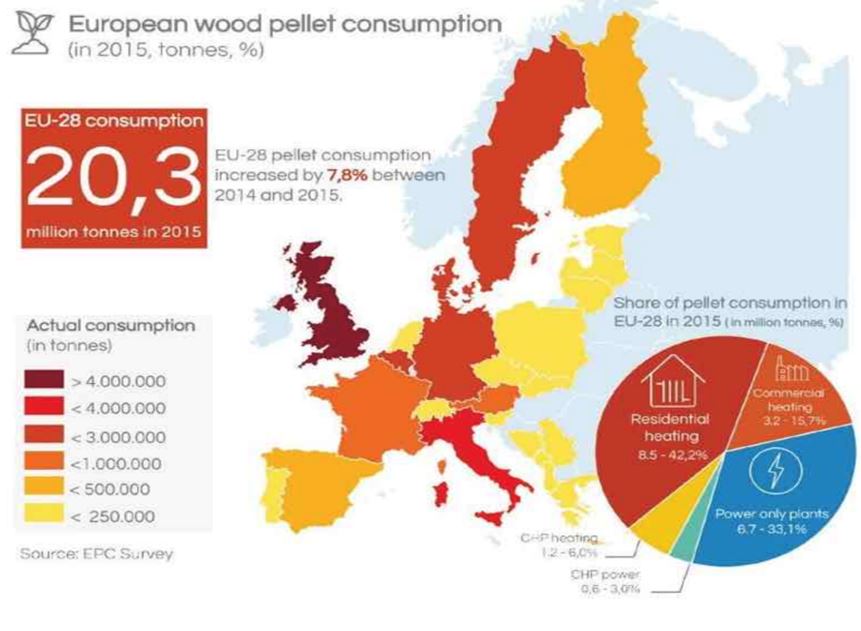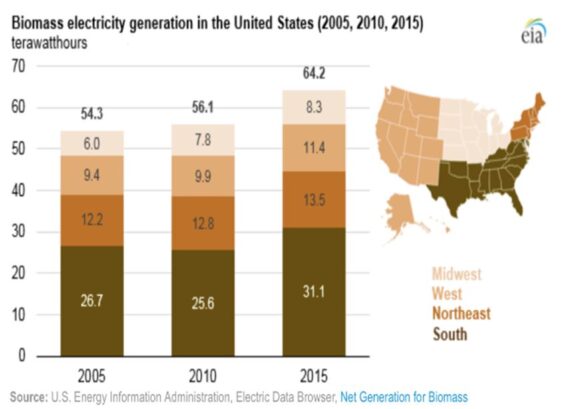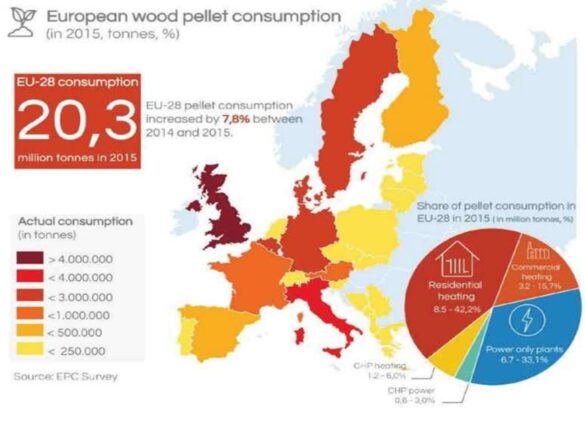By prioritising Paris commitments, while ignoring the more practical concerns of freer energy trade, the EU has put politics over economics. The current phrasing of the Renewable Energy Directive punishes states not party to Paris. Consequently, it will make trade with the United States more difficult, drive up the costs of clean energy, and make it harder for EU member states to meet their emissions targets post-2020.
What has contributed to reduced emissions among EU Member States?
The EU has recently revised its Renewable Energy Directive to set out the criteria for an energy policy post-2020. The emissions results that have been recently published show that 11 out of 23 member states surveyed did not meet their targets. This is a clear indication that something is wrong with the current environmental policy in the EU.
The UK, however, is one of the few large EU Member States that met its 2015 emissions targets. One of the contributing factors of this success was the country’s high import of wood pellets to produce biomass. The UK consumes approximately 1/3 of the world’s production in wood pellets, with an annual growth rate of approximately 20%. Belgium comes in second in the EU, and its consumption is rapidly growing (its consumption increased by 65% in 2016).
Wood pellets are a carbon-neutral energy source, obtained by burning the excess wood shavings produced by forests that have no industrial use. When these wood pellets are disposed off naturally, they give off the CO2 stored in them, meaning that when one burns them to produce energy, the CO2 released would have been released regardless. As a result, biomass energy is produced by using waste, rather than by releasing more CO2.
As a block, the EU consumes 79% of global wood pellets, 70% of which is produced within the Union, while the United States meets most of the remaining 30%.
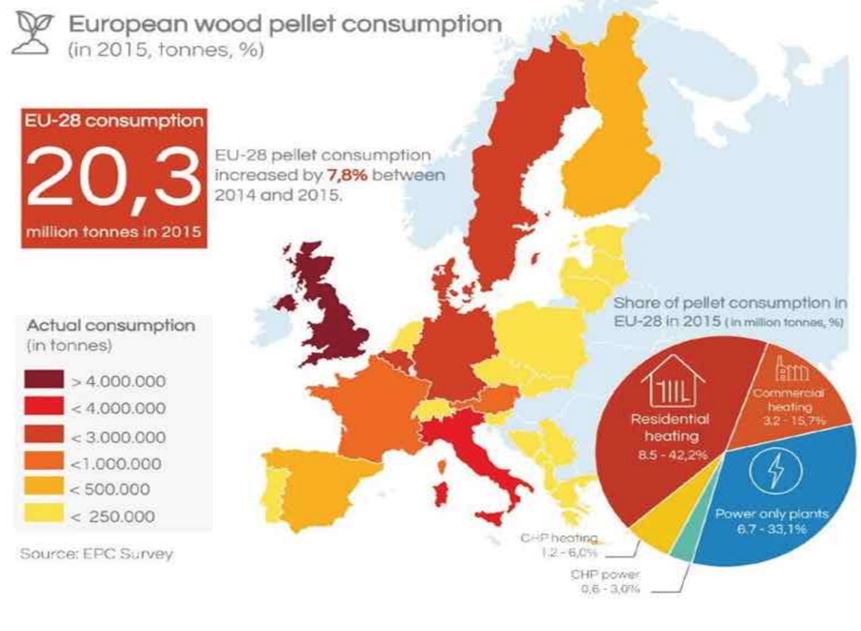
There are strong economic incentives behind an increased usage of biofuel. The cost of biomass is marginally greater than that of coal, but emissions are up to 80% less. This implies that biofuel is clearly a profitable alternative to coal for environmentally responsible firms that intend to satisfy the requests of green customers. Indeed, these clean energy sources provide added value to green consumers who, in turn, are willing to pay a mark-up for environmental friendly energy. Regrettably, the Renewable Energy Directive, imposing trade restrictions and increasing artificially monitoring costs, is hindering the normal development of a free European market for biofuel.
How does the Renewable Energy Directive affect the environmental trajectory?
The revised Renewable Energy Directive has several provisions that harm the attractiveness of biofuels and add barriers to their import. Among these is the reduction of the maximum amount of crop-based biofuel used in the transport sector from 7% to 3.8%. The Globium Study and the EU’s Climate Action study have criticized this reduction. Specifically, the Directive lumps in all biofuels into a single category, rather than taking into account the particular characteristic of each source.
Not only is this in violation of the EU’s Better Regulation principles, but it also goes against public opinion and European consumers’ support for biofuels as a clean energy source. Consumers’ support for the use of biofuels gives an indication of the potential profitability of the market for greener energy. If left free to operate and trade, energy companies and producers of biofuels would be guided by these profit incentives and adopt greener energy sources. The Directive, however, is hindering these market forces.
In addition, the Directive adds a series of expensive monitoring criteria to imports from the United States, as they are no longer party to the Paris Accord. The monitoring equipment stipulated is of such an expense that no US forest (notice that US forests are privately owned) will have an incentive to invest in clean biofuel. This would reduce the EU’s access to one of its most important sources of clean energy, driving up the import prices from other wood pellet exporters such as Canada.
How does trade improve global environment?
Nobel Prize Winning Economist Elinor Ostrom once remarked that “there is no reason to believe that bureaucrats and politicians, no matter how well meaning, are better at solving problems than the people on the spot, who have the strongest incentive to get the solution right.” By adding barriers to the EU’s energy trade with the US, this would take away the incentive for private forest managers in America to follow through with more sustainable practices. Indeed, if the US was allowed to continue its wood pellet trade with the EU, it would give small forests the incentive to invest in sustainability. The wood pellet export market has resulted in more forest area, more forest investment, and a large reduction in greenhouse gasses throughout the Southeast United States. This all being a result of trade, which has increased the value of investing in sustainable forestry techniques. In turn, the EU energy sector would have access to more affordable and cleaner sources of energy.
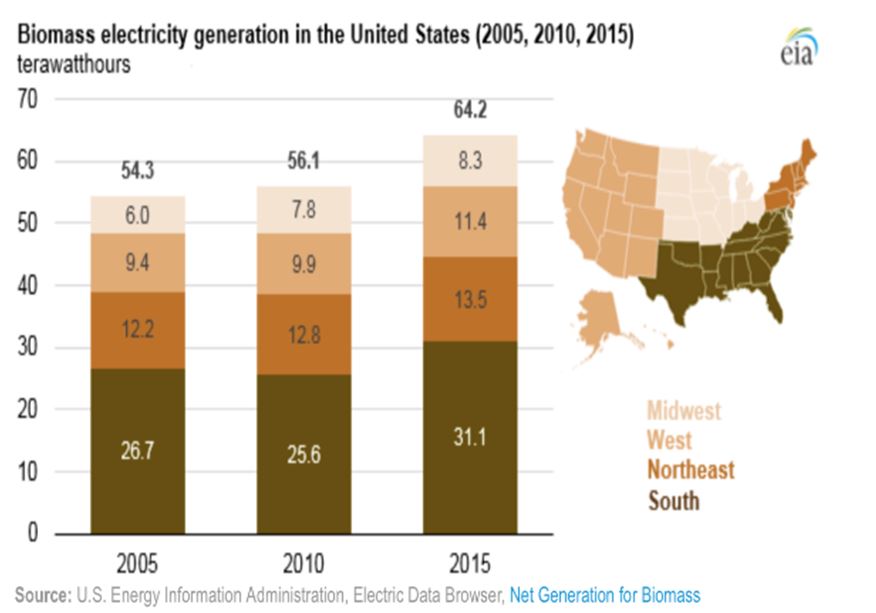
Initiatives such as the Paris Accord are concerned with the reduction of global emissions. It is, then, economically unsound to think that these can be reduced adopting national policies. Only through global free trade, the incentives of biomass producers would align with the demand of consumers for more environmentally conscious products, with positive effects for global emissions.



